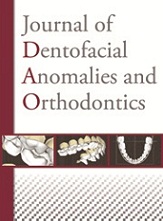No CrossRef data available.
Article contents
Facial envelope, labium superior alaeque nasi morpho-physiologic integration and malocclusion
Published online by Cambridge University Press: 13 December 2013
Abstract
By limiting its objective to correcting dysmorphisms of the dento-alveolar arches, current treatment of malocclusions loses a great deal of effectiveness that technical procedures might otherwise achieve. An inadequate understanding of the mechanics of the facial envelope can allow the dysmorphisms and breathing dysfunctions associated with malocclusions to persist.
However, the oral fissure has a profound impact on the mechanical behavior of the facial envelope. Like an operational command, it transforms the local mechanics of the facial envelope by creating a phenomenon of a concentration of stress and deformations whose manifestations are visible not only on facial soft tissues, but also on their cartilage and osseous supports. This phenomenon also influences the physiology of the facial muscles by distorting them as they are forced to adapt to the fissure, and by guiding the functional adaptations of the envelope.
Basically, the impact of this phenomenon on the structural organization of the facial envelope is transformed by the oronasal morphophysiologic integration of the structures of the face and practitioners must necessarily adapt their therapy to address these problems. Finally, the functional relationship between the nasal mucosa and the cavernous sinus increasingly broadens orthopedic perspectives for therapy that will most importantly encompass the cephalic hypothalamic-pituitary axis.
The effectiveness of a procedure appropriately initiated by practitioners of DFO due to their specific expertise will require them to exercise a greater attentiveness to the global functionality of this complex into which the face is integrated.
Keywords
- Type
- Research Article
- Information
- Copyright
- © RODF / EDP Sciences


